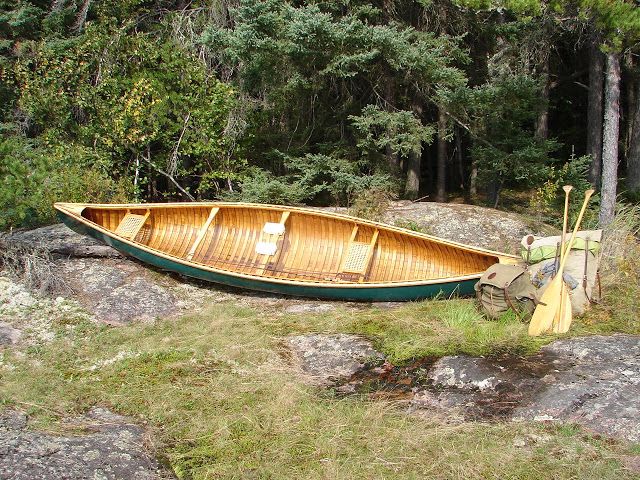Melthias15
Curious about Wooden Canoes
I recently aquired an 18ft 1920 OT Otca from a guy down the road. He said it came from a canoeing camp (Boy Scouts?) in Southeastern NY, ring any bells? There was a fair amount of cracking in the paint, probably from the filler getting too old. I took my parents out with it last week and had some slow leaking. Since then I have put three coats of deck enamel paint on it and let is sit for 7 days in some of the best weather we have have for a while. I also scraped out the interior as best i could to get rid of some of the old varnish, leaving a fair amount of the blackened varnish attached. After two coats of oil, I took it out with my girlfriend to see if the paint had taken care of the leaks temporarily, and I had no more problems with water penatration! Unfourtunatly, when i buped a log it scraped off a line of the new paint. Even though it had been a week, I guess that the paint was still not completely dry. Now it is drying form its first coat of varish on the inside, with the next one due in a couple of days. In the meanwhile, I figured I would get some imput on my strategy.
There is a fair amount of broken ribs/planking, but not enought to render the canoe unusable. My plan is to finish varnishing it and use it in July for a two week trip in the Adirondacks. This is my first WC, so any tips on tripping with one would be appreciated. My approach with this canoe is mostly utilitarian, and any work that is purely cosmetic is something I don't have time for this summer. Is there much of a advantage in totally stripping blackened varnish, other than looking good? It may be that this winter I recanvas and repair the wood, as well as really strip the interior.
There is a fair amount of broken ribs/planking, but not enought to render the canoe unusable. My plan is to finish varnishing it and use it in July for a two week trip in the Adirondacks. This is my first WC, so any tips on tripping with one would be appreciated. My approach with this canoe is mostly utilitarian, and any work that is purely cosmetic is something I don't have time for this summer. Is there much of a advantage in totally stripping blackened varnish, other than looking good? It may be that this winter I recanvas and repair the wood, as well as really strip the interior.





